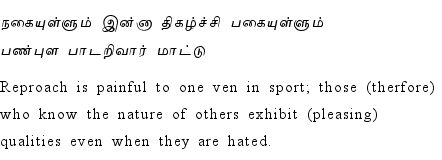Say �No� To Ragging
|
Fear and violence should find no place in seats of learning. USHA JESUDASAN |
While exploring the values that come from pursuing an ahimsa way of life, I cannot but write about the great himsa that besets our colleges today: ragging. A young reader writes, "I�m so looking forward to going to college, and doing medicine. But I�m terrified of ragging." Today, "college" evokes fear in many young people.
In British schools and colleges a couple of centuries ago, education in elite schools and colleges was for the privileged only. Occasionally a few from the lower classes got in due to their cleverness, scholarships or local patrons. The senior boys in such schools had power over all the new ones. They wanted respect � not the kind that comes with admiration; but that which is born out of fear. They made the lives of the new boys a misery. They gave them all kinds of impossible tasks and made them cringe with fear. Ragging was based on fear and cruelty.
A different vision
Until the British brought their system of education to India, we had a completely different vision of education and a different system � that of the guru-shishya parampara. Parents handed their child over to the guru, who then took on the responsibility of not just teaching the child to read, write, recite, and teach him a trade or skill, but also to turn him/ her into a good human being who could live with other people once he became an adult.
The new student was welcomed and introduced into the family of other students by the guru and was embraced into an atmosphere of trust, respect, acceptance and deep affection. They called each other by the respectful terminology for "older brother". The environment was that of an extended family, where respect grew out of doing things for each other and not to each other.
Everyone did common chores, and what the guru told them to do, as they knew that this was what they were here for, to learn and grow in a holistic environment, learning about relationships and fulfilling the daily needs of each other.
The very different nature of our ahimsa based Indian way of education was destroyed by Western ideas of personal importance, the competition for excellence, and the glorification of individualism.
With time our institutions of learning have become the breeding ground for abuse, insecurity, a great desire for power and being able to control another through fear and violence. Those with deep emotional insecurities, drunk on new found power are now are the masters who "control"
newcomers.
In today�s scenario of ragging, not even half of what really goes on comes to light. A student from a reputable city college writes, "I never told my parents about my humiliation. My head was shaved and �idiot� written at the back in blue. I knew my father would come and raise hell if I told him, but I would not be safe from the seniors after that. The punishment from the seniors would only have been worse, so I kept quiet and by the end of the term when it was time to go home, my hair had grown back. The worst thing was that the principal and other teachers knew all about it, and just did not do a thing except to say that ragging is banned in this college."
Those who were painfully ragged once, now become the raggers themselves and justify it by saying, "We are only doing what others did to us," and thus the system survives.
Although ragging is a criminal offence with no bail today, many colleges turn a blind eye to it and support this criminal system by not coming up with an alternative. It is not enough for colleges to just ban ragging by word, on paper or by law. They have to do more. Students and teachers must strongly believe in a counter culture where fear, violence and abuse have no place in their daily lives; where the values and the atmosphere offered are ones that foster and promote friendship and living and studying together in harmony. This counter culture should stimulate creative learning, recognise talents and skills and encourage students to grow in character that that would help them give of their best to society when they graduate.
Healthy ambience
Everyone in academia must be committed to living that new culture. And what better culture can we turn to than our own ahimsa-based roots of the gurukul system, where learning is done in a safe, healthy atmosphere. Can students be shown and taught that bonding with each other through kindness and compassion leads to lasting friendships? Our modern day teachers / gurus need to work hard on their relationship with each other to show the students that this way really works.
Can they show them that a friendly, peaceful atmosphere of trust and mutual respect, instead of violence and fear is a better learning environment and one which will benefit them more in the long run?
Are our educationists, the principals, professors and lecturers of our colleges up to the challenge of running ahimsa-based institutions? Are they willing to look inside their hearts and throw out even little vestiges of violence first, and then change the atmosphere in their colleges from himsa to ahimsa? I sincerely pray so.

| Go Back | Go Top | Go Home |